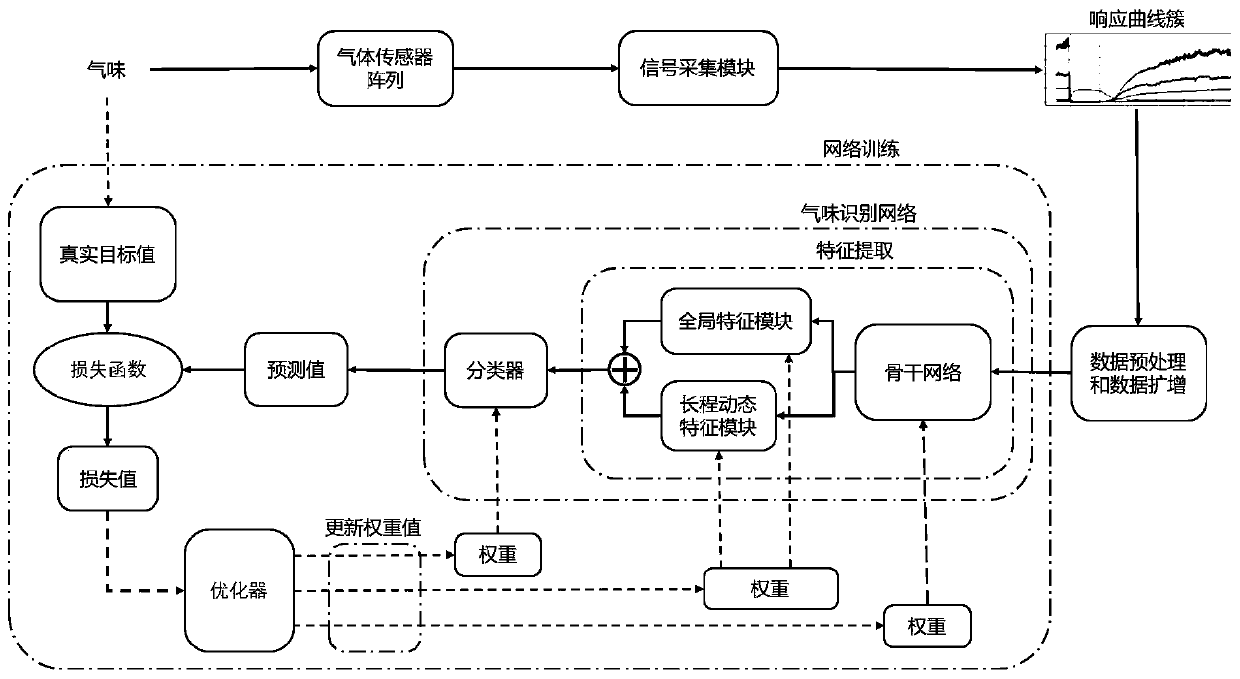Odor identification method based on gas sensors and deep learning
A gas sensor and deep learning technology, applied in the field of odor recognition based on gas sensors and deep learning, can solve problems such as the inability to model long-distance connections of single-channel time series signals, the impact of recognition accuracy, baseline drift, etc., to improve odor recognition Performance, Avoidance of Information Loss, Effect of Specific Odor Recognition
- Summary
- Abstract
- Description
- Claims
- Application Information
AI Technical Summary
Benefits of technology
Problems solved by technology
Method used
Image
Examples
Embodiment Construction
[0036] In order to make the objectives, technical solutions, and advantages of the present invention clearer, the following further describes the present invention in detail with reference to the accompanying drawings and embodiments. It should be understood that the specific embodiments described herein are only used to explain the present invention, but not to limit the present invention. In addition, the technical features involved in the various embodiments of the present invention described below can be combined with each other as long as they do not conflict with each other.
[0037] The invention provides an odor recognition method based on gas sensor and deep learning, such as figure 1 As shown, the steps specifically include:
[0038] (1) Obtain the response curve cluster of the odor to be measured through the gas sensor array;
[0039] (2) Performing data preprocessing and data amplification on the response curve cluster to obtain a sensor signal;
[0040] (3) Perform featur
PUM
 Login to view more
Login to view more Abstract
Description
Claims
Application Information
 Login to view more
Login to view more - R&D Engineer
- R&D Manager
- IP Professional
- Industry Leading Data Capabilities
- Powerful AI technology
- Patent DNA Extraction
Browse by: Latest US Patents, China's latest patents, Technical Efficacy Thesaurus, Application Domain, Technology Topic.
© 2024 PatSnap. All rights reserved.Legal|Privacy policy|Modern Slavery Act Transparency Statement|Sitemap



